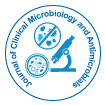

Commentary - (2023)Volume 7, Issue 2
Fungi, often overshadowed by the more glamorous members of the natural world, are a diverse and fascinating group of organisms that play crucial roles in ecosystems around the globe. From towering mushrooms in lush forests to microscopic mycelium threads weaving through the soil, fungi are ubiquitous and incredibly versatile. This article discusses about fungi, exploring their biology, ecological importance, and their interactions with humans.
Fungi belong to their own distinct kingdom, separate from plants, animals, and bacteria. They are characterized by their unique mode of obtaining nutrients, as they are primarily decomposers or symbionts. Unlike plants, fungi lack chlorophyll and cannot carry out photosynthesis. Instead, they acquire their nutrients by breaking down organic matter, such as dead plants, animals, or even artificial materials like plastics. Fungi release powerful enzymes that break down complex organic compounds into simpler molecules, which they can absorb and use as food.
One of the most recognizable forms of fungi is the mushroom. These umbrella-shaped fruiting bodies are just the visible tip of a vast network of interconnected mycelium—the thread-like structures that make up the main body of the fungus. Mycelium can be found in the soil, decaying wood, or even living organisms. It serves as a network for nutrient and information exchange, connecting different organisms in intricate symbiotic relationships. Fungi interact with plants in a variety of ways, forming mutualistic associations that benefit both parties.
One such association is mycorrhizae, where fungi form a symbiotic relationship with plant roots. Beyond their ecological importance, fungi have also had a profound impact on human history and culture. Edible mushrooms, such as shiitake and portobello, have been prized for their culinary value in many cultures for centuries. Fungi also play a significant role in the production of fermented foods, including cheese, bread, and beer. The unique flavors and textures they impart have made them indispensable in the culinary world. However, not all fungi have positive effects on humans. Some species can cause devastating diseases in plants, animals, and even humans. Fungi have also found their way into our cultural imagination. In folklore and mythology, they often symbolize mystery, enchantment, and decay. Fairy rings, circular formations of mushrooms, have long been associated with magical creatures and supernatural phenomena. Mushrooms and fungi have been depicted in art, literature, and even psychedelic experiences, capturing our fascination with their otherworldly forms and psychedelic properties.
In recent years, scientists have discovered fascinating applications of fungi in various fields. Mycoremediation, for instance, utilizes fungi to clean up polluted environments by breaking down toxic substances. Fungi have shown promise in breaking down oil spills, pesticides, and even radioactive waste. Their ability to degrade complex organic compounds could prove invaluable in mitigating environmental damage caused by human activities.
Furthermore, fungi have been explored for their potential as a sustainable alternative to traditional materials. Mycelium can be grown into durable and biodegradable materials that could replace plastics, Styrofoam, and even construction materials like concrete. These mycelium-based materials have the potential to revolutionize various industries, offering a renewable and environmentally friendly alternative.
Citation: Pomba P (2023) Different Forms of Fungi and Their Applications. J Clin Microbiol Antimicrob. 7:160.
Received: 05-Jun-2023, Manuscript No. JCMA-23-25528; Editor assigned: 08-Jun-2023, Pre QC No. JCMA-23-25528 (PQ); Reviewed: 23-Jun-2023, QC No. JCMA-23-25528; Revised: 30-Jun-2023, Manuscript No. JCMA-23-25528 (R); Published: 07-Jul-2023 , DOI: 10.35248/JCMA.23.7.160
Copyright: © 2023 Pomba P. This is an open-access article distributed under the terms of the Creative Commons Attribution License, which permits unrestricted use, distribution, and reproduction in any medium, provided the original author and source are credited.